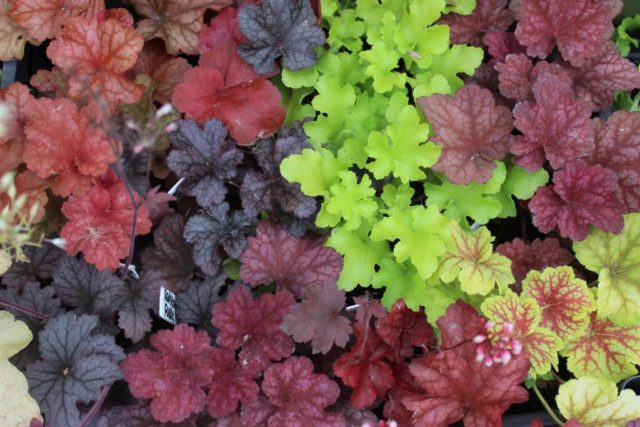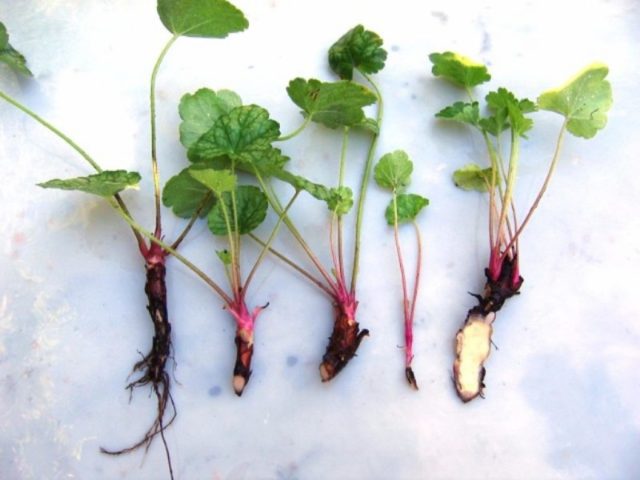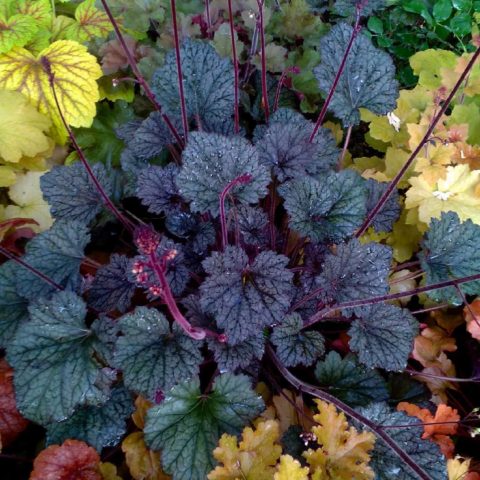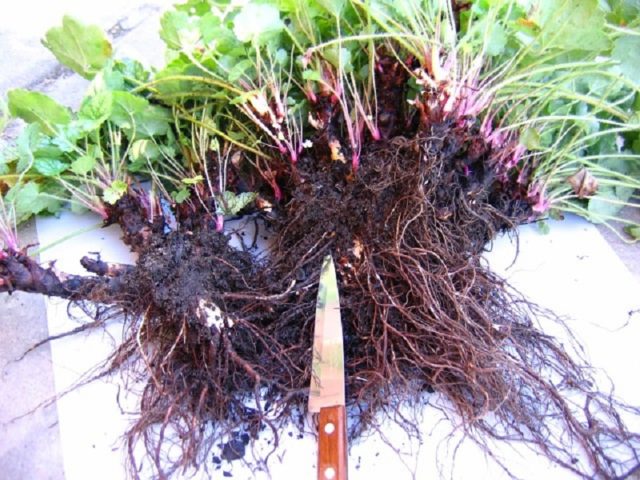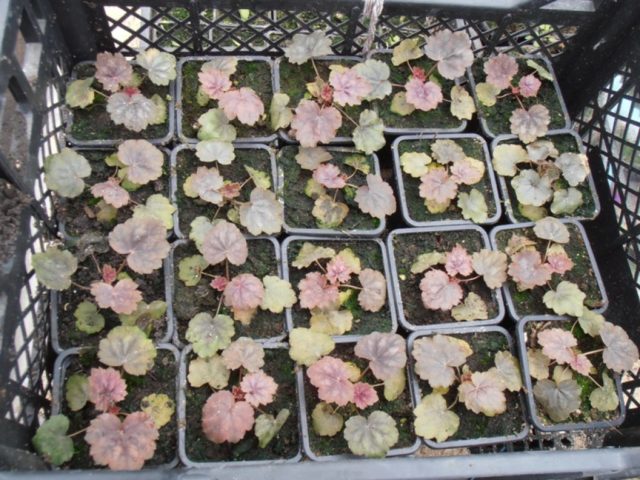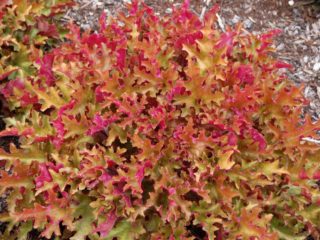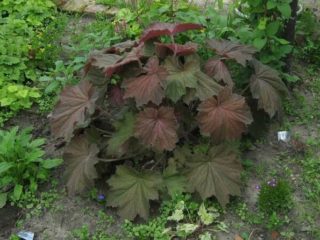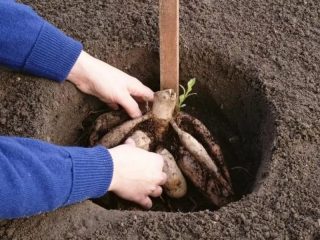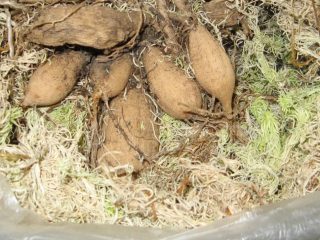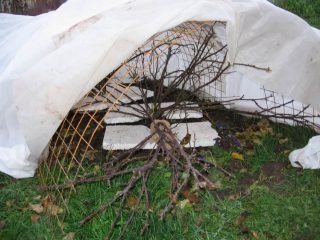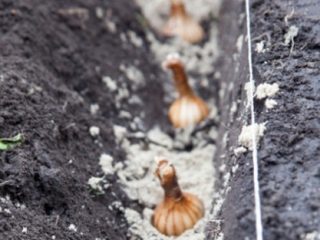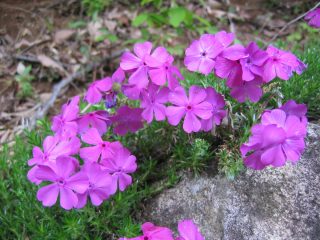Content
The plant is known among breeders and landscape designers for the unusual color of its leaf blades, which changes several times during the season. Heuchera can be propagated in several ways, the choice of which depends on the capabilities of the gardener.
How does heuchera reproduce?
The plant is light-loving, but also grows well in partial shade. In waterlogged and heavy soil, heuchera quickly dies. The following methods are used for its propagation: seeds, cuttings and division of shrubs and leaves.
When choosing seed propagation of heuchera, it should be taken into account that it will be possible to change the varietal qualities of the crop, which forces gardeners to choose a different method.
Heuchera propagation by cuttings
The optimal time for propagation of heuchera by cuttings without roots is the spring and summer months: May and June. The procedure is carried out before the first flowers bloom on the crop.
Principles of heuchera cuttings:
- the mother bush must be healthy: from the growing heuchera it is necessary to cut off the shoot with part of the root;
- For the procedure, you must use sharp, sterile, alcohol-treated scissors or a knife;
- It is recommended to sprinkle fresh cuts on the branches with ash;
- The leaf plates are removed from the cut cuttings, leaving 2-3 pieces on the rosette;
- It is important to plant cuttings in a shaded area (greenhouse or hotbed), the temperature in the room should be lower than in the environment so that the plant directs all its forces to rooting, and not the formation of buds and leaf blades;
- in a greenhouse, the cutting must be covered with a cloth and a film on top, which will create the most optimal humidity; excess condensation will be absorbed into the cloth;
- When planting cuttings, it is important to place them so that the rosettes are above ground level. Their deepening will lead to the death of the flower.
Caring for planted heuchera cuttings involves timely watering and loosening the soil. For speedy rooting, it is allowed to use growth stimulants (Zircon).
The first roots form 3-5 weeks after planting: the more comfortable the conditions are for the plant, the faster the heuchera adapts.
Planting cuttings in open ground is possible after complete rooting. If this process is completed by autumn, then it is better to postpone the procedure to spring.
Heuchera does not require frequent watering: once every two days is enough. In dry weather, the soil needs to be moistened more often. Feeding the cuttings is not required if it was planted in fertile soil. When growing heuchera in acidic, loamy and heavy soil, it is recommended to feed the plant in limited quantities, halving the dosage.
Before the onset of winter frosts, the cuttings are covered with spruce branches or moss or left in a heated greenhouse.
Heuchera propagation by dividing the bush
Every year, the basal rosettes of the flower grow in height, while at the same time the lower, dried leaf plates fall off. This process leads to exposure of the internodes, which creates an external resemblance of the plant to a palm tree. Most often, changes can be noticed in the 3rd–4th year of the culture’s life.
It is recommended to divide shrubs with palminess. If this method of propagation of heuchera is neglected in the spring, the flower begins to lack nutrients, and the shoots themselves dry out.
Dividing the bush has a beneficial effect on its growth and development:
- the propagation procedure rejuvenates the shrub, allowing it to better tolerate winter frosts and summer heat;
- strengthening the immune system, increasing resistance to harmful insects and diseases.
If this method of propagation is abandoned, the “palminess” of the shrub increases, as a result of which the bare stems break under the influence of external factors, which leads to the death of the plant.
Rules for dividing heuchera in spring:
- the bush is removed from the soil, trying to keep the root system intact as much as possible;
- the roots are thoroughly washed using running water;
- Using a sharp knife, divide the bush into several parts so that each of them has several rosettes;
- It is recommended to cut off excessively long roots;
- all rotten parts affected by disease or pests are removed to healthy white tissue;
- fresh sections must be sprinkled with a mixture of charcoal and growth powder or use the product “Kornevin” and “Ukorenit”;
- remove all dry parts of the plant, then plant the separated parts around the area; to do this, place the heuchera in the prepared hole, then sprinkle it with soil so that the leaves and rosettes remain above the surface of the soil, after which the plant is watered abundantly;
- As the heuchera grows, it is recommended to add soil or mulch until the ground around it is completely leveled.
Heuchera takes root favorably after the propagation procedure with proper care: immediately after transplantation, the shrub needs shelter and regular watering, loosening, and weeding until it is completely rooted.
Heuchera propagation by leaves
Propagation of the crop by germinating leaf blades in water with their subsequent rooting is not practiced. As an alternative to propagating heuchera by leaf, it is preferable to use the method of cuttings or dividing the bush.
Heuchera propagation by seeds
Among the advantages of growing a crop with seed are minimal labor costs and simplicity of the technique. The main disadvantage of using seeds for propagation is the lack of beautiful inflorescences and the low decorativeness of leaf plates.
To propagate heuchera in the spring, you need to prepare containers and seeds. The seed must be fresh and stored for six months after collection. When storing seeds in foil, they retain the ability to germinate for 1.5 years.
Before planting, the container is thoroughly washed and dried, and covered with earth. The soil is moistened with a spray bottle. Since heuchera seeds are small, they are distributed as evenly as possible over the surface and are not deepened.
Seeds germinate well if provided with sufficient sunlight, so the container with seedlings must be placed on a draft-free windowsill. To ensure a greenhouse effect, it is recommended to cover the container with seeds with film or glass until the first shoots appear. This procedure will create an optimal temperature and prevent the development of fungal diseases.
After the first shoots appear (2-3 weeks from the moment of planting), the glass is lifted or a hole is made in it. When three leaves appear on the heuchera, the seedlings are picked, leaving 4-6 cm between the plants.
Caring for heuchera, which is propagated by seeds, consists of timely moistening the soil and removing weeds. Before planting in open ground, seedlings must be hardened off in the fresh air for two weeks. The optimal time for transferring heuchera to the site is the beginning of June.
Conclusion
Planting, propagating and caring for heuchera is a fascinating process that requires time and patience. A wide variety of crop cultivation methods allows you to choose the optimal method suitable for the site.
